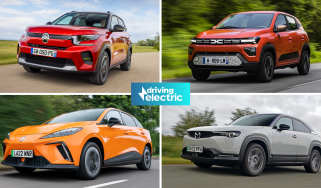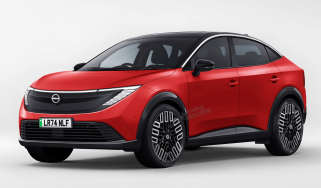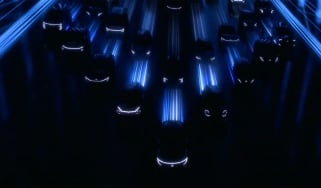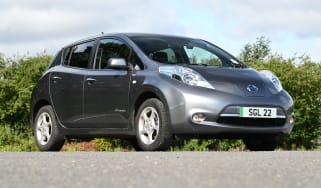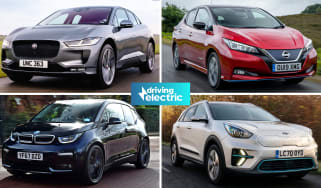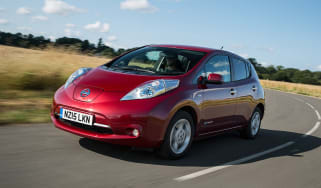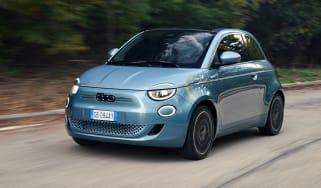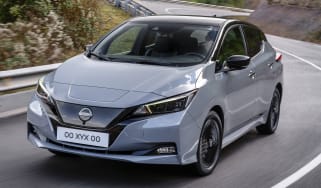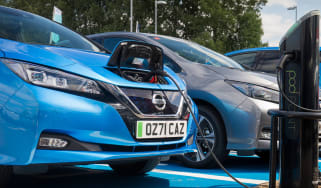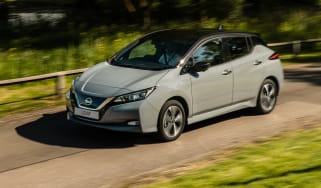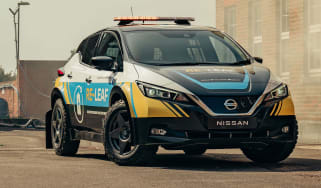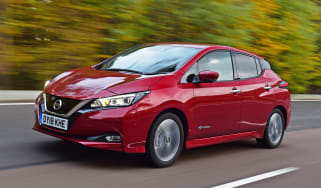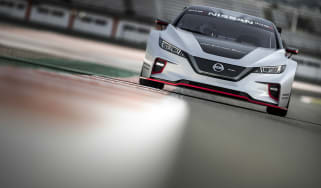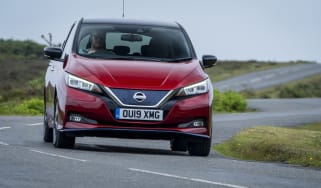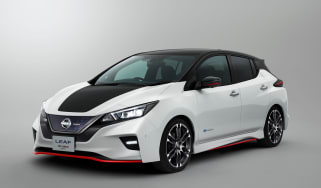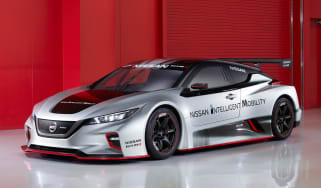Nissan Leaf review
The Nissan Leaf certainly proves cheap can be cheerful, although it’s starting to feel a little long in the tooth
Pros
- Affordable for its size
- Advanced driver assistance
- Decent real-world driving range
Cons
- Dated infotainment
- Slow charging speeds
- Driving position can be uncomfortable
|
Model |
Range |
Wallbox charge time |
Rapid charge time |
|
Leaf |
168 miles |
7hrs 30mins |
60mins (20-80%, 50kW) |
|
Leaf e+ |
239 miles |
11hrs |
90mins (20-80%, 50kW) |
Nissan Leaf verdict
The Nissan Leaf was one of the first affordable electric cars for the masses, and while there are now several newer, flashier rivals to choose from, there are still some advantages to opting for this EV stalwart. As mentioned, it’s still relatively cheap to buy, and most other electric cars at this price point don’t offer the same levels of interior space. Even the base powertrain is rather nippy and Nissan’s ‘e-Pedal’ one-pedal driving makes pootling around town a breeze. The Leaf may feel a tad ancient compared to its bigger brother, the Nissan Ariya – slow charging and a bland interior don’t help matters – but it’s still worth considering if low running costs are at the top of your car buying agenda.
Range details, specs and alternatives
For a long time, the Nissan Leaf was the world’s best-selling electric car. While the more-fashionable Tesla Model Y has since stolen its crown, it remains popular, with the second-generation Leaf acting as a rival for the likes of the MG4, Renault Zoe and Vauxhall Corsa Electric.
Underneath the Leaf’s rather pedestrian bodywork is one of two powertrain set-ups: base models start from under £30,000 and get a 39kWh battery that’s mated to a 148bhp front-mounted electric motor. Straight-line performance is more than adequate – 0-62mph takes 7.9 seconds – but a range of just under 170 miles means this model is mostly directed at city drivers.
Step up to the Nissan Leaf e+ and this gets a larger 62kWh battery for a range of up to 239 miles – a figure that’s nearly on-par with newer and more expensive models such as the Peugeot e-2008. Paired to this larger battery is a more powerful 214bhp motor, which slashes the 0-62mph time by a full second and, while the Leaf isn’t the most engaging car to drive, makes it feel somewhat sprightly.
Unfortunately, unlike most newer electric cars, the Nissan Leaf still features an old-fashioned CHAdeMO charge port, rather than the now-industry standard CCS connector – we’ll explain the repercussions of this in the ‘Range, battery size & charging’ portion of our review. Regardless, a maximum charging speed of 50kW means a 10-80% top-up will take an hour at the minimum, with e+ models taking a further 30 minutes to charge up to this point.
Beyond the two powertrains are four distinct trim levels, with the entry-level Shiro and Acenta specifications only available with the smaller 39kWh battery pack. Both powertrains are also available in top-end N-Connecta and Tekna guises, although even the base Acenta gets things like an eight-inch touchscreen with Apple CarPlay and Android Auto, automatic climate control, blind-spot monitoring and a reversing camera.
Click here to see why you can trust DrivingElectric reviews, or for a more detailed look at the Nissan Leaf, read on for the rest of our in-depth review…

